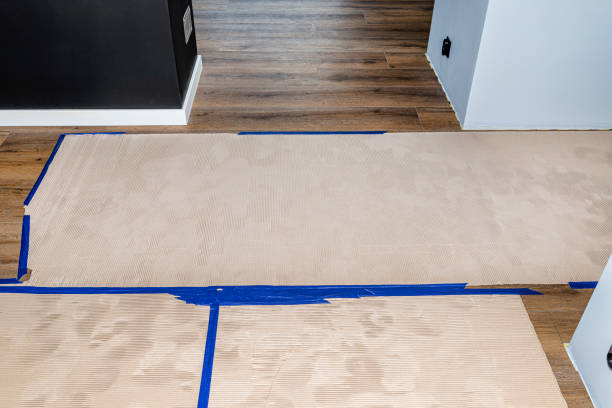The classic hand-knotted Moroccan Wool Rug you have saved for months has finally arrived.
You want to lie on the floor and stare at the ceiling covered in spiders.
You notice your new carpet slipping as you lay there, devising a clever plan to evict your unwanted tenants.
You suddenly realize that you still need one important element for your carpet home improvement project: a rug pad.
What is a Rug Pad? And how can you meet this urgent need for one?
We have three DIY rug pad projects that you can do. Let’s first explore the benefits of creating your rug pads.
Why make your rug pad yourself
It is economical to make your rug pads.
Rug pads protect your area rugs against wear and tear due to dust accumulation. They will maintain their quality for many years.
The DIY rug pads protect your floors from color transfer and scratches caused by rough rugs. This is especially important in areas with high foot traffic (such as the kitchen).
Rug pads are essential for rugs and flooring that is slippery. If you have nothing to give you extra grip, the rug will bunch up and move while walking on it. You may slip. This can be prevented by using a non-slip rug pad.
The rug pad protects your floor from heavy or bulky furniture which could otherwise dent or scratch your floor.
The extra cushioning that a rug pad provides will be appreciated by your feet. Rug pads make your rug more comfortable underfoot, even with thin carpeting.
One more thing: a rug mat can insulate your cold floors. This is especially true for tiles.
How to make an inexpensive DIY rug pad
Rug pads can be added to any rug, regardless of the type of floor or rug that you choose to decorate your home. They are inexpensive and don’t require a large budget increase. Why? You can make your rug pads.
The thickness of your rug is a good starting point for determining what rug pad to buy or, in this case, make yourself. If your scatter rug is a higher-pile type, you should choose a dense or heavyweight material for the rug pad. Low-profile rug pad materials are best for runners with thinner piles.
Rug Dimensions and Padding Measurements
Rug Size and Padding Size
9×12 8’10”x11’10”
8×11 7’10”x10’10”
8×10 7’10”x9’10”
5×8 4’10”x7’10”
5×7 4’10”x6’10”
We recommend felt rug pads made from natural rubber and felt. The combination is eco-friendly because it uses recycled materials, and both materials are safe for any flooring type. This type of padding provides a good mix of cushioning and non-slip grip with its natural rubber backing.
Use padding by the yard for thinner rugs
The thin padding made from rubber will work well with low-profile runners like micro-hooked and woven wool. The padding is durable, washable, and prevents taping.
This type of padding can be used to protect you and your family from falling and slipping down the stairs.
Pros
The vacuum cleaner is easy to use due to its firm grip on the rug and floor.
The open grid promotes airflow, which prevents moisture and dust from settling under the scatter mat.
You can also find out more about the Cons
- You should be aware that super-cheap rubber padding may contain harmful additives such as plasticizers and clay fillers, which can cause your flooring to stain.
How to make a waterproof memory foam rug pad using carpet padding
This project is perfect for animal lovers. Memory foam pads are known for their softness and floor protection, so you can spend time with your pet on the rug. Waterproofing greatly benefits pet owners, especially if they are still house-training their dog, cat, or bunny.
Have you ever slept on a mattress made of memory foam? You know how soft and comfortable it is. Memory foam is a foam that has been frothed and then given extra elements to increase its viscosity. This gives it a luxurious feel.
Buy your Memory Foam Mat Padding in square feet up to the desired size.
Pros
Comfortable and very comfortable
It is waterproof, so spills won’t damage it.
You can also find out more about the Cons
It is not as good in high-traffic areas because it does not bounce back quickly.
Softness makes it a little more expensive.

